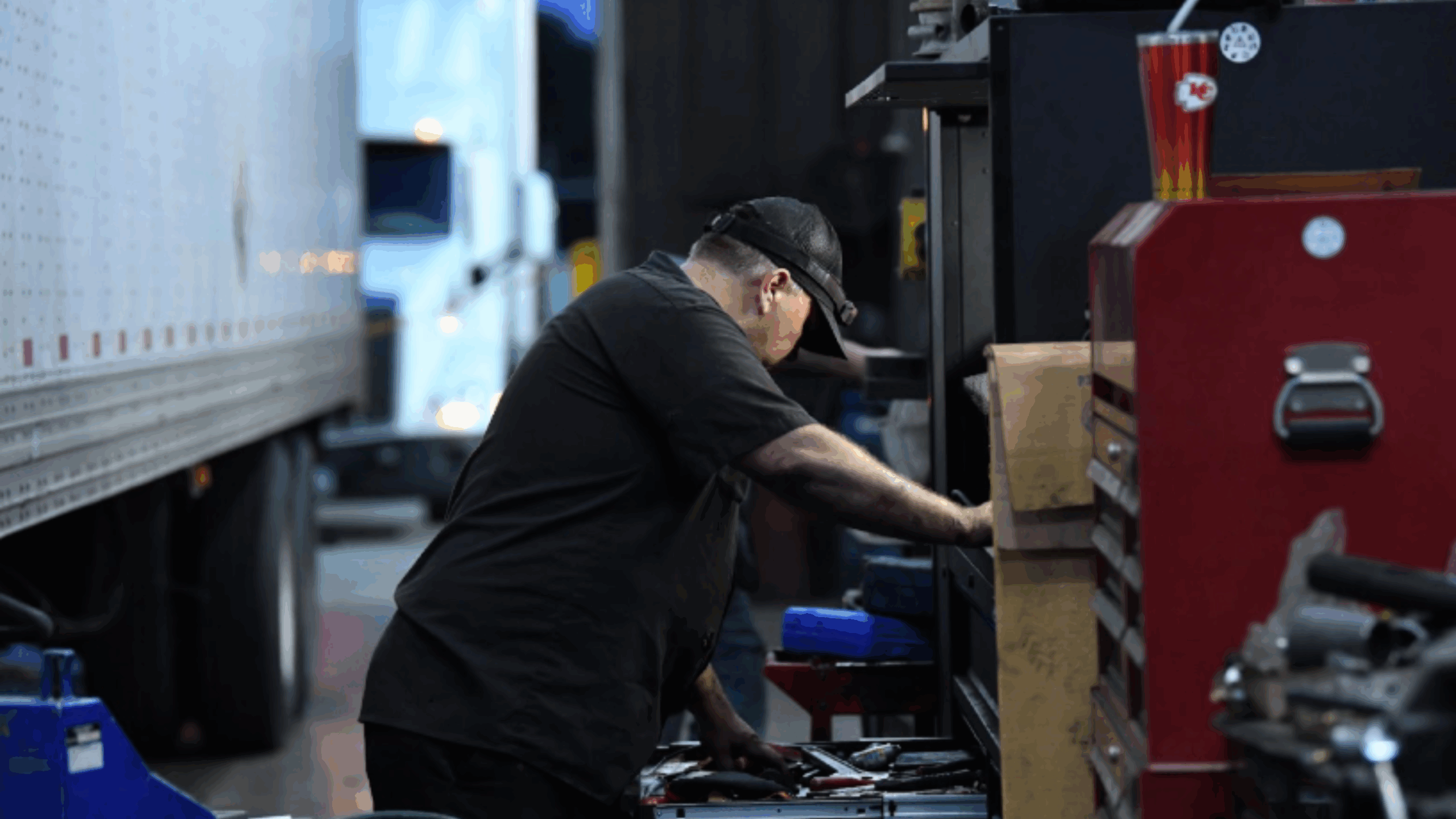Trailer Roof and Floor Inspections – How Small Leaks Turn Into Cargo Claims and Lost Shipper Trust

1. Translucent Roof Panels
Older trailers often came with fiberglass or polycarbonate roof panels designed to let in natural light. Great idea back then. But over time, UV exposure makes them brittle, crack-prone, and yellowed. Even pinholes will drip during rainstorms, and if you’ve got paper, textiles, or food cargo under it — that’s an instant claim.
2. Wooden Side Panels vs. Plate Walls
For years, dry vans were built with wood side panels. They were inexpensive, easy to repair, and flexible enough to absorb impact from forklifts or shifting freight. But wood has one big problem — it absorbs moisture. Over time, it swells, warps, and rots. That means leaks through the walls, weakened spots where load bars won’t hold, and hidden cracks that show up as water stains on freight.
Modern trailers use composite or metal plate walls. They’re more durable, resist moisture, and provide a tighter seal. If you’re still running older wooden side-panel trailers, you’ve got to double down on inspections. A crack you ignore today may turn into a rejected load tomorrow. Some shippers won’t load them regardless.
3. Floors
Floors take daily abuse from forklifts, pallet jacks, and shifting loads. On older trailers, wood floors can start to flex and soften. Once a section weakens, you risk product damage or even a forklift punching through. For small fleets, a single weak board can cost thousands in both claims and downtime.
4. Seams and Rivets
Most leaks don’t come from a giant hole — they creep in through seams. The rivets along the roof rail, the joints where aluminum meets steel, even old sealant that’s cracked away. Water doesn’t need much room. It only needs consistency.
5. Doors and Seals
Not technically the roof or floor, but your rear doors are one of the biggest culprits. Old seals harden, crack, or separate. That gap lets in dust, water, and cold air loss. It also screams “neglect” to any inspector or shipper that spots it.
What Small Leaks Really Cost You
Here’s where too many carriers downplay the problem. “It’s just a drip.” Sure. Until you run paper or electronics.
Paper Loads: A single drip on a roll of uncoated paper creates a stain ring the size of a basketball. That roll is now rejected. Depending on the size, that can be $500–$2,000 in loss, billed straight to you.
Food Cargo: A weak board in the floor that splinters under a pallet jack? That product may shift or topple. FDA and shippers don’t play with damaged goods. Now you’ve not only got a claim — you’ve got potential product disposal costs if they flat out refuse it at the consignee.
Electronics or Textiles: Moisture damage is unforgiving. A water-stained box of clothing or a shorted-out pallet of electronics is black mark after black mark with your broker.
One claim can eat up a week’s profit. Two claims kill a customer relationship. Three? Your name spreads across the broker community, and suddenly your MC isn’t trusted.
Inspection Routines That Protect You
The good news? Roof and floor inspections aren’t complicated. They just require discipline.
Roof Checks:
Park the trailer in daylight and look up — weak spots in translucent panels are easy to spot when the sun hits.
Check rivet lines and seams for gaps or daylight shining through.
Run water across the roof with a hose if possible; watch for drips inside.
Look for sagging sections or ponding water — these eventually crack.
Side Panel Checks:
On wood-panel trailers, press along seams and lower sections for soft or weakened spots.
Look for water stains or discoloration — clear signs of leaks.
Ensure load bars and logistics posts still hold — wood can weaken over time.
On plate-wall trailers, check welds, rivets, and impact points for separation or cracks.
Floor Checks:
Walk the full length inside with boots. Soft spots will flex under weight.
Look for dark stains in wood that suggest past water intrusion.
Inspect from underneath — corrosion on cross members often starts before the floor gives.
Pro Tip:
Document every inspection. A 30-second photo of the roof, floor, and side panels before you load can be the difference between winning and losing a claim dispute.
When to Repair vs. When to Retire
Not every leak means you need a new trailer. But you need to be honest about where the line is.
Repairable:
Small cracks in translucent panels (patch kits available).
Minor soft spots in wooden side panels or walls.
Sealant touch-ups around rivets and seams.
Door seal replacements (cheap insurance).
Replace or Retire:
Multiple soft spots across the floor.
Large roof panel failure or brittle across the length.
Rotting wood side walls that no longer support load bars.
Frames corroded beyond structural soundness.
Building a Trailer SOP
Small fleets often skip written policies. Don’t. A simple Trailer Inspection SOP sets expectations for drivers and keeps you out of claims. Here are a few simple reminders you can implement in addition to your review process
Pre-Trip: Visual check of roof, side panels, floor, and door seals.
Monthly: In-depth walk-through and undercarriage inspection.
Quarterly: Hose test for leaks, full underbody torque check.
Annual: Professional shop inspection with documented repairs.
Tie SOPs to accountability. A driver who fails to report a leak or a weak spot isn’t just careless — they’re risking your business.
FAQs
Q: Do translucent roofs always mean trouble?
Not always. Some still perform well after 10–15 years if properly maintained. But they’re more prone to UV cracking.
Q: Should I avoid older wood-panel trailers altogether?
Not necessarily, but if you run them, you need stricter inspections. Plate-wall trailers are more forgiving and hold value longer, but older wood walls demand extra vigilance.
Q: How much does a floor replacement cost?
A full wood floor replacement averages $4,000–$6,000 and up. Spot board replacements may only run a few hundred, but they add up if you’re patching constantly.
Q: Can insurance cover cargo claims from trailer leaks?
Yes, but only once or twice. Too many claims and your premiums skyrocket, or you’ll end up getting dropped. Insurers expect you to maintain equipment.
Q: How do you track inspections across multiple trailers?
Simple record keeping, ELD notes, or apps like Fleetio or Whip Around. The tool doesn’t matter. Consistency does.
Final Word
A small leak or weak wall panel may not sideline your truck the way an engine failure would, but it can quietly sink your business just the same. Shippers don’t measure you by your horsepower — they measure you by how safe and secure their freight arrives. The money rides in the trailer and not the tractor anyway.
If you’re running older trailers with translucent roofs and wooden side walls, discipline matters even more. Inspections aren’t optional — they’re survival. In a market where trust is currency, one water stain can cost you far more than the repair ever would have.
The lesson is simple: inspect, document, and repair before the claim arrives. Protecting your trailer’s roof, side panels, and floor isn’t just maintenance — it’s business strategy.



